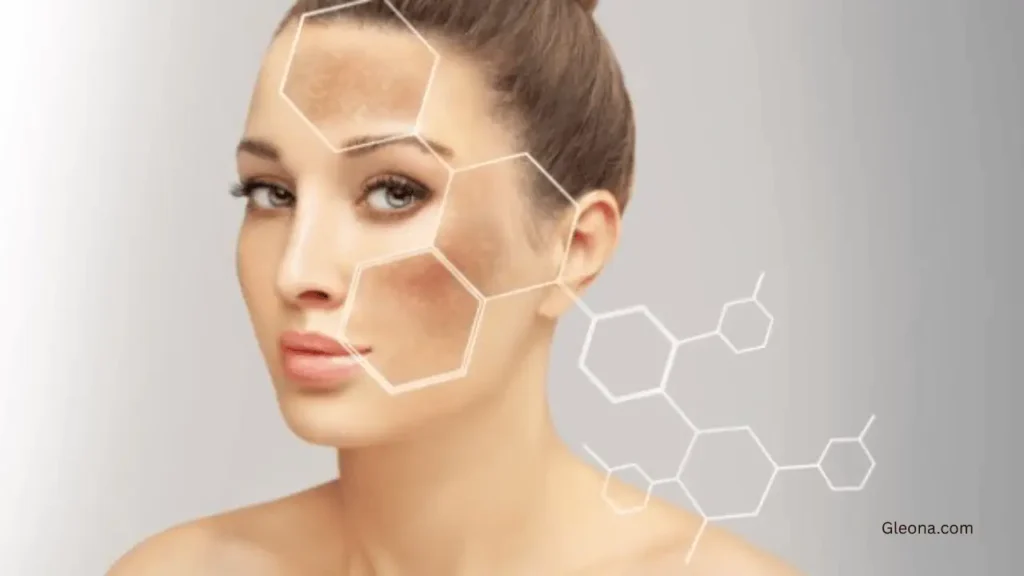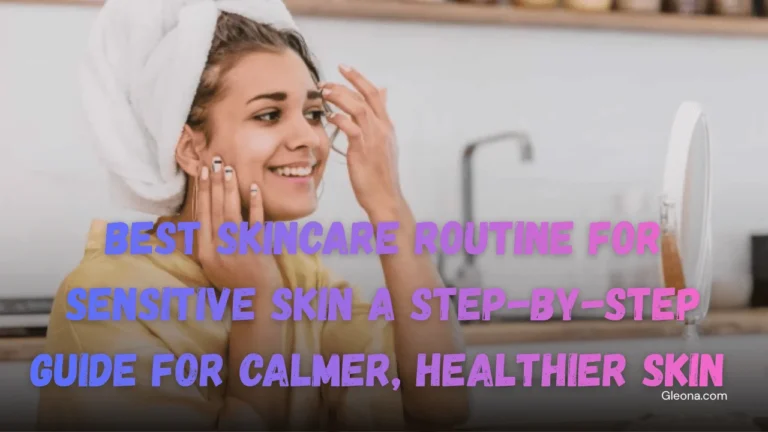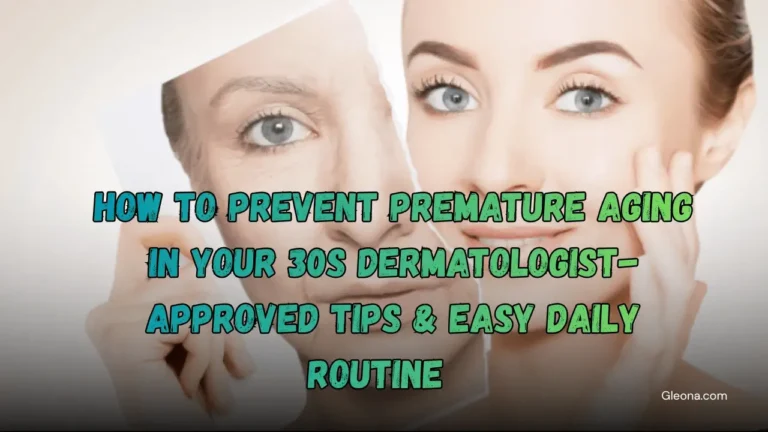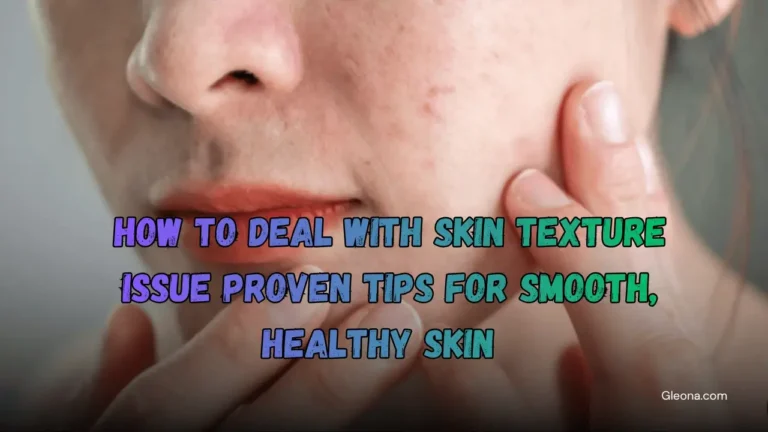Hyperpigmentation is one of the most common skincare concerns among young adults today, especially for those aged 18–35. Whether it’s acne marks, sunspots, or uneven skin tone, dark patches can affect your confidence and make achieving clear, glowing skin feel impossible. The good news? With the right knowledge, hyperpigmentation can be treated and even prevented with consistent care.
In this guide, we’ll break down Hyperpigmentation: Causes, Treatments & Prevention in a simple, practical way. You’ll learn what triggers dark spots, how to fade them with dermatologist-approved treatments and at-home routines, and the daily habits that keep your skin clear and even-toned. If you’re ready to finally get rid of stubborn dark spots and reveal healthier skin, let’s get started.
What is Hyperpigmentation?

Hyperpigmentation is a common skin condition where certain areas of the skin become darker than the surrounding skin. This happens when the body produces excess melanin, the natural pigment responsible for skin, hair, and eye color. These dark patches can appear anywhere on the body but are most common on the face, neck, and hands.
It affects all skin types but tends to be more noticeable in medium to darker skin tones. Hyperpigmentation isn’t harmful, but many people seek treatment for cosmetic reasons, especially when it impacts confidence or causes uneven skin tone. Understanding what causes it is the first step toward choosing the right treatment and preventing future dark spots.
Hyperpigmentation: Causes
Hyperpigmentation can develop for several reasons, most of which are linked to how your skin reacts to internal changes or external triggers. When the skin is exposed to certain factors like sun, inflammation, or hormonal shifts it may produce more melanin as a protective response. Over time, this leads to dark patches or uneven skin tone.
Internal Causes
• Hormonal Changes:
Fluctuations in hormones often due to pregnancy, birth control pills, hormone therapy, or conditions like PCOS can trigger melasma, a type of hyperpigmentation commonly seen on the cheeks, forehead, and upper lip.
• Genetics:
Some people are naturally more prone to developing dark spots due to their genetic makeup. If hyperpigmentation runs in your family, you may experience it more easily.
• Aging:
As skin matures, cell turnover slows down, making dark spots more visible and long-lasting.
External Causes
• Sun Exposure (UV & Blue Light):
The sun is the #1 cause of hyperpigmentation. UV rays stimulate melanin production, leading to sunspots and worsening existing dark patches. Even blue light from screens may contribute to pigmentation over time.
• Post-Inflammation (PIH):
Any skin trauma such as acne, eczema, cuts, burns, waxing, or picking at pimples can trigger inflammation that leaves behind dark marks once the skin heals.
• Harsh Skincare Products & Treatments:
Over-exfoliation, strong fragrances, alcohol-based products, or incorrect product combinations can irritate the skin and cause discoloration.
• Heat & Environmental Stress:
High temperatures, pollution, and UV combined can increase oxidative stress, leading to pigmentation, especially on exposed areas.
Best Treatments for Hyperpigmentation

Treating hyperpigmentation takes consistency and the right combination of ingredients or procedures. The best approach depends on the type and severity of dark spots. You can choose from dermatologist-approved professional treatments or effective at-home skincare products but for lasting results, sunscreen and patience are key.
Dermatologist-Approved Treatments
These options are ideal for stubborn or long-standing hyperpigmentation:
• Chemical Peels
A chemical solution (AHA, BHA, or TCA) is applied to exfoliate the top skin layers, revealing brighter, more even skin. Great for acne scars, sunspots, and melasma. Multiple sessions may be needed.
• Laser Therapy
Laser treatments target pigment beneath the skin, breaking it down so the body can clear it naturally. Effective for deep pigmentation, but results vary by skin tone must be done with a trained professional.
• Microneedling
Tiny needles create micro-injuries to boost collagen and help fade pigmentation. Works well for acne marks, uneven texture, and scarring. Often combined with serums for better results.
• Prescription Topicals
Dermatologists may prescribe stronger ingredients such as:
- Hydroquinone (lightens dark spots)
- Tretinoin (accelerates cell turnover)
- Azelaic Acid 15–20% (reduces inflammation and pigment)
These offer faster results but should be used under guidance.
Proven Over-the-Counter Ingredients That Work
If you prefer at-home treatment, these ingredients are scientifically backed to fade hyperpigmentation. Introduce them slowly and consistently.
• Vitamin C
A powerful antioxidant that brightens skin, fades dark spots, and protects from UV damage. Best used in the morning.
• Niacinamide
Reduces dark spot formation, controls oil, and improves skin barrier. Gentle and suitable for sensitive skin.
• Retinoids (Retinol)
Boosts cell turnover to fade pigmentation and smooth texture. Best used at night; results visible in 8–12 weeks.
• Azelaic Acid (10%)
Targets acne and pigmentation together. Ideal for acne-prone and sensitive skin types.
• Kojic Acid
Lightens dark spots by reducing melanin production. Often found in serums or spot-treatments.
• AHA/BHA Exfoliants
- AHA (Glycolic/Lactic Acid): Removes dull, dead skin cells for an even tone
- BHA (Salicylic Acid): Clears pores and prevents PIH from acne
Use 2–3 times per week to avoid irritation.
How Long Until You See Results?
Results depend on the cause and severity of pigmentation, but with consistent care:
- Mild pigmentation: 4–8 weeks
- Moderate case: 8–12 weeks
- Deep or long-term spots: 3–6 months or longer
Home Care Routine to Fade Hyperpigmentation

A consistent skincare routine can significantly fade dark spots and prevent new ones from forming. The key is to focus on gentle exfoliation, brightening ingredients, and daily sun protection. Below is a simple beginner-friendly routine designed for visible results within 4–12 weeks.
Morning Routine (AM)
- Gentle Cleanser
Removes oil and impurities without stripping the skin. A gentle base helps prevent irritation that can worsen pigmentation. - Vitamin C Serum
Brightens the skin, fades dark spots, and protects against UV damage and pollution.
Tip: Look for 10–15% L-Ascorbic Acid if you’re a beginner. - Niacinamide or Lightweight Moisturizer
Niacinamide helps calm inflammation, improves skin texture, and prevents new dark spots from forming. If not using niacinamide, apply a hydrating moisturizer suitable for your skin type. - Sunscreen (SPF 30 or Higher)
The most important step. Protects skin from sun exposure the #1 cause of pigmentation and dark spot recurrence.
Choose: Broad-spectrum sunscreen with SPF 30–50.
Night Routine (PM)
- Cleanser
Washes away dirt, makeup, sunscreen, and pollution from the day. - Chemical Exfoliant (AHA/BHA) 2–3 Nights per Week
- AHA (like Glycolic/Lactic Acid): Fades dull, uneven skin tone
- BHA (Salicylic Acid): Prevents acne-related dark marks
Note: Do not use on the same night as retinol.
- Retinoid or Azelaic Acid
- Retinol (0.2%–1%) speeds up cell turnover and fades pigmentation.
- Azelaic Acid (10%) targets pigmentation and acne perfect for sensitive skin.
Use retinol on alternate nights if you’re new to active ingredients.
- Hydrating Moisturizer
Locks in moisture, strengthens the skin barrier, and prevents dryness caused by active ingredients.
Do’s & Don’ts for Faster Results
Do:
Patch-test new products
Introduce actives gradually
Stay consistent (results take time)
Don’t:
Mix too many strong actives at once
Pick or squeeze pimples
Skip sunscreen dark spots will return
When to Expect Results
With consistency and sun protection:
- Noticeable brightness: 2–4 weeks
- Visible dark spot fading: 6–12 weeks
- Deeper pigmentation may take 3–6 months
Prevention: How to Stop Dark Spots from Coming Back

Once hyperpigmentation begins to fade, the next step is preventing new dark spots from forming. Prevention is all about protecting the skin from triggers like sun exposure, inflammation, and irritation. With the right habits, you can maintain an even skin tone long-term and stop pigmentation from returning.
Lifestyle & Skincare Habits for Prevention
• Wear Sunscreen Daily (Non-Negotiable)
UV exposure is the main cause of hyperpigmentation and makes existing dark spots darker. Apply a broad-spectrum SPF 30–50 every morning even on cloudy days or when indoors near windows.
• Avoid Picking Pimples or Scratching Skin
Touching, squeezing, or picking acne and scabs causes inflammation, which leads to post-inflammatory hyperpigmentation (PIH). Hands off for clearer skin!
• Patch-Test New Products First
Introducing new skincare without testing can lead to irritation or allergic reactions, causing pigmentation. Test on a small area for 24–48 hours.
• Stick to Barrier-Friendly Skincare
Harsh exfoliation, strong fragrances, and alcohol-based products can weaken the skin barrier, making discoloration more likely. Choose gentle, hydrating products with soothing ingredients like ceramides or aloe.
• Maintain a Healthy, Antioxidant-Rich Diet
Foods rich in Vitamin C, Vitamin E, omega-3, and antioxidants help protect the skin from oxidative stress and inflammation. Think leafy greens, berries, nuts, and fish.
Makeup Tips to Conceal Hyperpigmentation (Without Worsening It)
• Use Color Correctors First
- Peach/orange corrector for dark marks on medium to deep skin
- Yellow corrector for brown spots on fair skin
• Choose Non-Comedogenic, Oil-Free Products
These reduce the risk of clogged pores and acne, helping prevent PIH.
• Always Remove Makeup Before Bed
Sleeping with makeup can lead to breakouts and irritation, creating new dark spots.
By following these habits consistently, you can keep your skin bright, even-toned, and protected while reducing the chances of dark spots coming back.
Conclusion
Hyperpigmentation can be frustrating, especially when dark spots linger long after acne, sun exposure, or irritation. But with the right knowledge and a consistent routine, achieving clearer, more even-toned skin is absolutely possible. By understanding the causes, using proven treatments, and practicing daily prevention, you can fade existing dark spots and stop new ones from forming.
Remember, progress takes time most people begin to see results within 6–12 weeks. Be patient, stay consistent, and protect your skin every day. Your journey to healthier, glowing skin starts with small daily habits, and you’re already one step closer by learning what truly works.
For more Skin Care Tips and Tricks, Please visit gleona.com.
Frequently Asked Questions (FAQs)
1: Can hyperpigmentation go away naturally?
Yes, mild hyperpigmentation can fade over time, but it may take several months. Using targeted ingredients like Vitamin C, niacinamide, or retinol can speed up results.
2: How long does it take to treat hyperpigmentation?
With consistent skincare, most people notice improvement in 4–8 weeks. Stubborn or deeper pigmentation may take 3–6 months or require dermatologist treatments.
3: Does sunscreen help reduce hyperpigmentation?
Yes. Sunscreen prevents dark spots from getting darker and stops new pigmentation from forming. Use a broad-spectrum SPF 30 or higher daily.
4: Which ingredient is best for hyperpigmentation?
There isn’t one best ingredient results improve when combining a few. Top options include Vitamin C (AM), retinol (PM), niacinamide, and azelaic acid.
5: Can all skin types use treatments for hyperpigmentation?
Yes, but sensitive skin should start slowly, especially with actives like retinol or acids. Patch-test first and introduce one new product at a time to avoid irritation.






